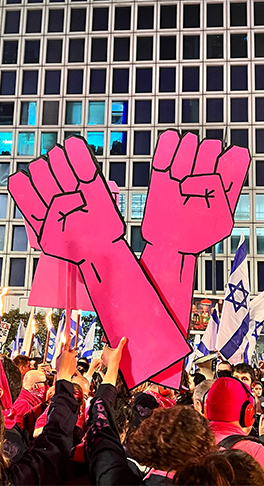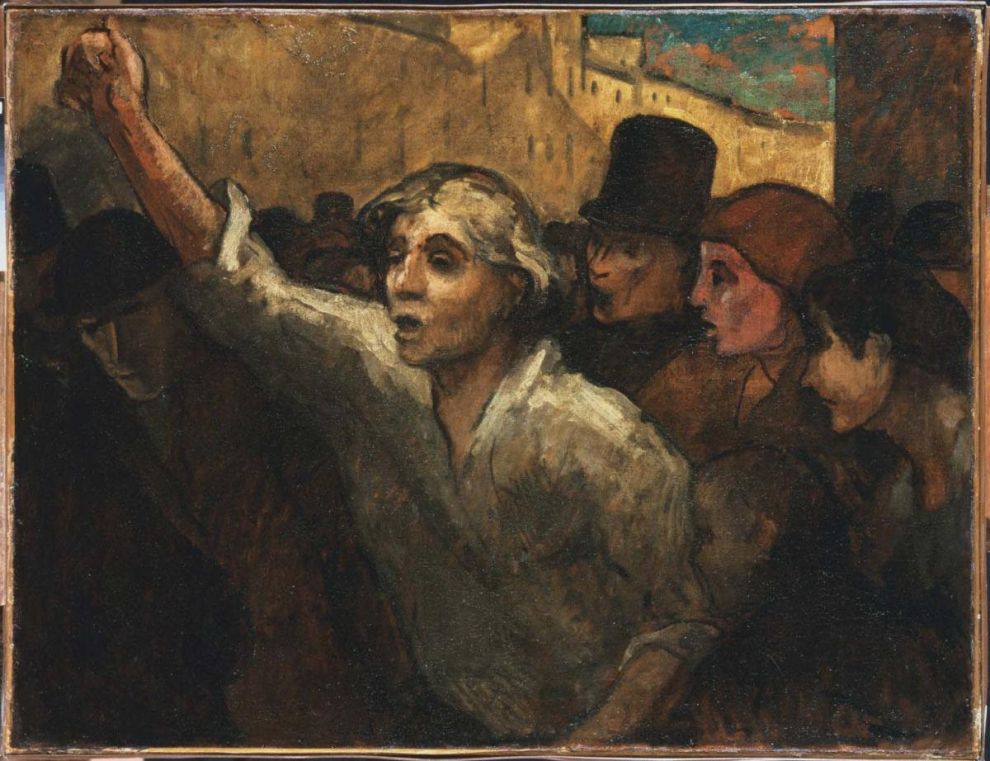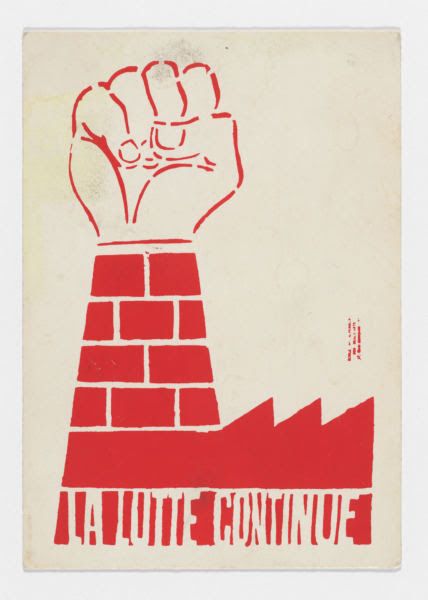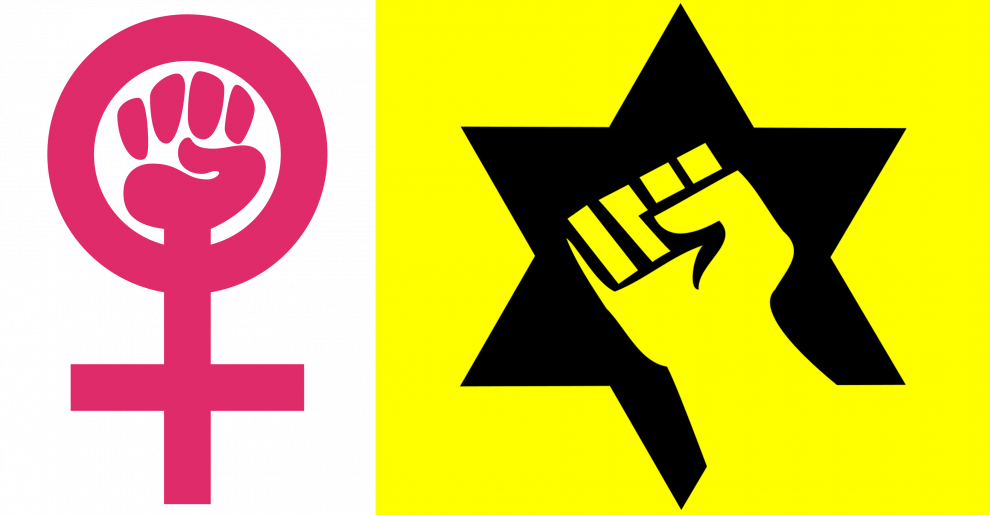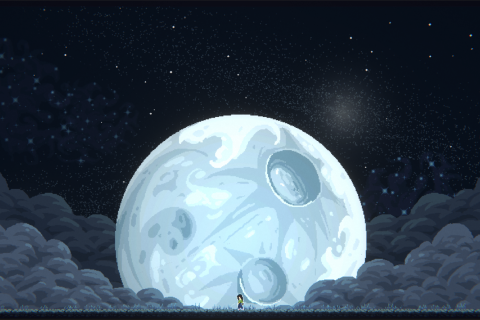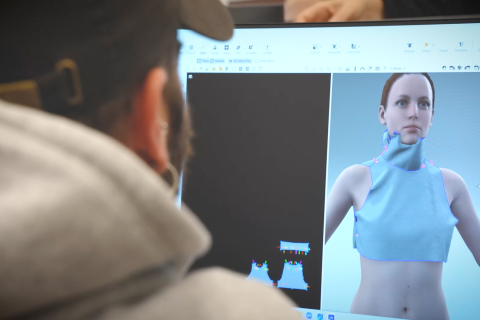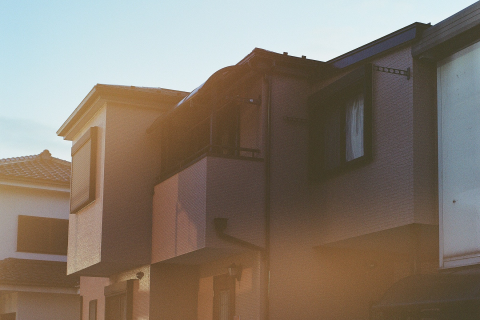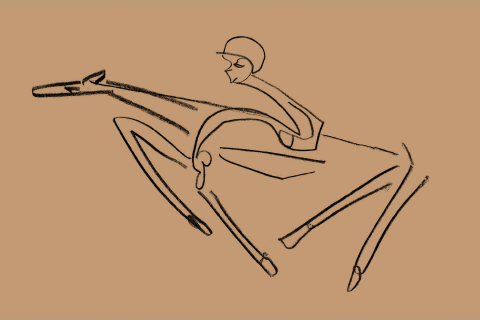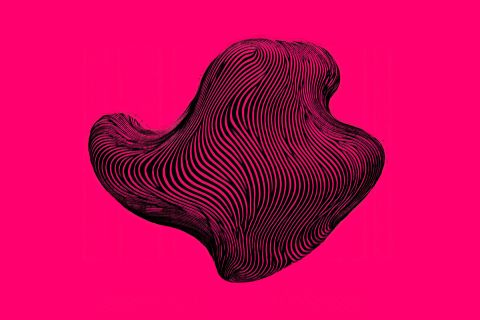Bezalel News
חדשות בצלאל
أخبار بتسلئيل
Even a Fist Was Once an Open Palm with Fingers
“Remember and remind the fallen fruit
Of the leaves and the branch,
Remind the hard thorns
That they were soft and green in spring
And don’t forget that even a fist
Was once an open palm with fingers.”
(The third poem about Dicky, Yehuda Amichai)
Since the beginning of the protest against the judicial reform, many raised arms can be seen across the country, Israeli flags held up in their palms, unwillingly appearing like a clenched fist. Actual fists are in fact not seen in the demonstrations. However, more and more images of fists started to appear during the last few weeks, whether it’s simple graphic illustrations drawn on signs, or models of enlarged fists carried by demonstrators, sometimes in 3D. It’s possible, that the Israeli public has a problem with a raised arm as a salutation. And perhaps we can discuss an act of distancing– it’s not the fist itself, but a representation of it, belonging to the person holding it and to everyone else at once.
There is no doubt that the fist is an effective sign and symbol. A sign (or icon) in the sense that it is intuitively coherent and expresses the thing itself - anger, aggression, power and determination. A symbol in the sense that it is used at different moments and in different places to transmit a specific message whose understanding requires familiarity with the discourse, with the contexts in which it was disseminated, and with other visual elements that were connected to it. It operates on the tension between anger and solidarity, between oppression and rebellion, between resistance and resilience, between hope and despair, between willingness to fight (and perhaps even being delighted to fight) and dreading war and its consequences. And again, there is a difference between the physical act of raising the fist and the generic representation of it.
Honoré Daumier's oil painting The Uprising (1848), is an example of an early display of a passionate demonstrator, raising his fisted right hand while he and his comrades shout in protest. The group which is made of men, women and children from all avenues of society, moves in one direction and clearly has a common goal. The painting documents the events of the revolutionary uprisings of February and July 1848, which eventually led to the overthrow of the monarchy of Louis Philippe and the establishment of the Second French Republic.
The source of the fisted saluting gesture, and of the fist logo are not truly clear. Of course, they can be found in the Communist Soviet Union, where the gesture and its image functioned as a symbol of the workers of the world and the willingness to fight until death for The International. Later they were used by those who fought fascism, and especially the Republican forces in the Spanish Civil War (1936-1939). Since then, they have been broadly used. As an example, we have this poster, one of many that were created and distributed by the designers of Atelier Populaire, during the climactic days of the student protests in Paris in May 1968. "The struggle continues" states the sign, and the link to the communist struggle, in particular, and other struggles with a social flavor (socialist, with or without quotation marks), in general, is obvious - from the color red to the iconic image of industrial plants.
Certainly, the raised fist is often associated with leftist movements and minority groups, but there are significant exceptions. First, there are well known right-wing movements (some of which are utterly fascist) that make use of it. Second, the Left, by its very nature, is a broad ranging and flexible concept that embraces, for the sake of this discussion, causes of civil unrest, uprisings against oppressive dictatorial rule, anti-war protests and messages of equality, social, racial and gender justice. To make the point, it's enough to mention in the first context the symbol of the Kach movement - Kahana Chai (a fist placed inside the star of David), and in the second context the symbol of the feminist movement (a fist placed inside the Venus symbol). Another example impossible to ignore is the Black Power Fist, which is associated with black nationalism, black pride and solidarity which became popular during the BLM protests.
Returning to the painting of Daumier, we cannot ignore the fact that the stone walls are closing in on the protesters and a heavy shadow is cast upon them; nonetheless, a patch of rosy-blue sky peeks from above.
Thank you, Dr. Tal Frenkel Alroy and Dr. Liat Sabin Ben Shoshan for our conversations on the topic.
Dr. Naomi Meiri-Dan
Lecturer in the Department of Visual and Material Culture
